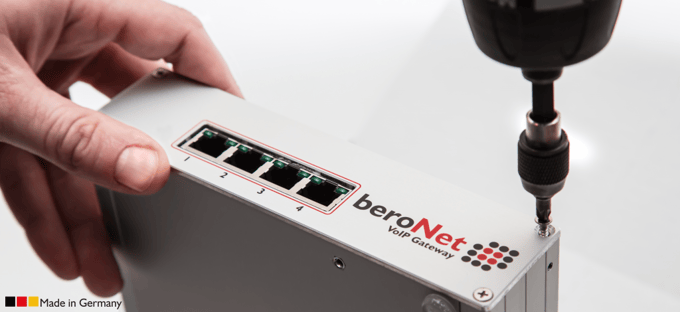VoIP Gateways are traditionally viewed as a way to connect old technology with new technology, allowing you to connect either an IPBX with a PSTN line, or a Legacy PBX with a SIP Trunk. While this functionality is still needed, the current trend of providing fully hosted or "all VoIP" phone systems makes one doubt the need for a gateway; it may even be seen by default as an "expendable" expense. This is a mistake. Before labeling gateways as outdated equipment, take a look at the following scenarios and determine whether one of them may help you add additional value to your next pitch, placing you ahead of your competitors.
Use a VoIP Gateway to connect old technology with new technology:
This is the traditional way to use a VoIP gateway. In this scenario the gateway functions as a translator between:
- Analogue phones and an IPBX system
- Reduce the up-front cost of switching to VoIP by keeping your analogue phones and your new IPBX system.
- A legacy PBX and a SIP trunk
- This allows you to gain the cost saving benefits of using a SIP trunk without purchasing an entirely new telephone system. Keeping the same system also helps internally as no extra employee training will be required to use the new service.
- A Legacy PBX system and an IPBX system
- Sometimes you need to add a couple of telephones to your telephone system, however doing so reaches beyond the capabilities of your legacy PBX system. By adding a gateway and an IPBX system you can add those additional lines without replacing everything in your current setup. This will also allow you to test a variety of IPBX systems before switching fully to a VoIP solution.
- An IPBX system and a PSTN connection
- Using a gateway will help you have reliable calls in an area with a spotty and unreliable internet connection. It is also an ideal solution if you are unable to use a SIP trunk and want to gain the overall benefits of using an IPBX software solution.
Use a VoIP Gateway for least cost routing:
A VoIP system optimized for least cost routing will direct specific calls to the provider that will charge the least amount per minute for that particular call. In its simplest form, a least cost routing system will route local calls to a local PSTN connection and international calls to a SIP trunk.
A more complex least cost routing scenario could include multiple company branches with both PSTN and GSM gateway technologies. For example, calls to service areas near a company branch are directed through a gateway at that specific branch. If the call is to a mobile number, it is routed through a GSM gateway installed at that branch. If there isn't a local branch at the call destination location, it is routed through a SIP trunk.
Use a VoIP Gateway as a backup solution for a SIP Trunk:
While it is true that a broadband connection today is far more reliable than it was five years ago, it can still have a few hiccups. When installing a telephone system at a location that needs to maintain its ability to make and receive phone calls at all times it would be worthwhile to keep a PSTN connection handy, just in case.
Use a VoIP Gateway as a backup solution to fully hosted IPBX:
Fully Hosted IPBX systems are a growing trend among business today. They offer a full telecommunication system without the hassle of purchasing and managing additional hardware, beyond the telephones themselves. The primary downside to such systems is that if for any reason you lose your connection to the hosted IPBX, you lose your ability to make both internal and external calls. It is possible to create a backup "Survival PBX" using a single gateway, allowing the individual office to continue making and receiving both internal and external calls until the connection with the IPBX is reestablished.
Use a VoIP Gateway to lower the burden on your IPBX server:
You may be in a position in which you want to install your VoIP IPBX on an old computer lying around the office. While this may work now, in time the codec translation services can begin to tax the computer's processor. It is possible to use a VoIP gateway to handle all codec translation to take this particular burden from the server processor allowing it to focus on other functions.
Visit http://bit.ly/1TepMPd for a free White Paper on how to use a VoIP Gateway in a soft migration.



